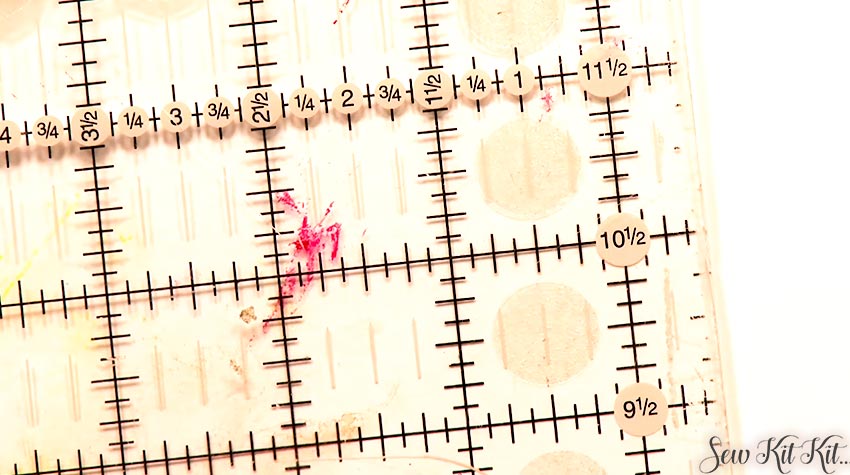Last Updated on May 25, 2021
Want to know the method of how to use a quilting ruler? Here you will find some tips which can help you to understand the use of it.
Introduction:
A quilting ruler is used to cut the fabric pieces to the correct measurements so that they will fit together properly. It is a very useful tool in the quilting process.
It is not that, you cannot work without it but it can be difficult for you to cut fabric items used in quilt blocks with scissors randomly. Using a quilting ruler is quite easy, all you need to do is just understand the process of how to use a quilting ruler.
Quilting rulers have the standard measurements drawn across the ruler, usually resulting in a grid pattern which can help you to cut your fabric pieces according to your needs. Since they come in a wide variety of shapes and sizes, the basic pattern is the same for all of them.
The hatch marks may seem confusing to you, but once you learn to use a quilting ruler, it will be easy for you to use any quilting ruler whatever the brand is.
How to use a quilting ruler:
First of all, know the width of your quilting ruler. Usually, the widest long rulers were six inches wide but sometimes you can get six and a half inches and that’s because so often we cut half-inch strips or six and a half-inch blocks and so having that extra half-inch is important.

If you want to cut two-inch strips, put your quilting ruler on the fabric and mark it on the second-long line, and cut according to it. Before buying a quilting ruler, you need to be careful that the ruler has clear marking information on the surface.

If you notice the ruler carefully, you can see there are so many hatch marks. You need to understand how to use those marks. Suppose you need a pattern that needs to be cut three and three-eighths. Between every inch marking, the quilting ruler generally has four pieces of information.
Usually, the half-inch between that inch line is the longest and then quarter-inch lines that are a little shorter, and then eight-inch lines that are the shortest.

So, if you want to have something that is three and three-eighths, the very first thing you need to start working off the side which is the opposite of half-inch increment because you should know that you are not going to work off this half-inch increment side.
Count over three inches and three-eighths and that is where you are going to cut. In this way, you can cut those one-eighth, five-eighth, and seven-eighth increments. It’s not hard to do when you get used to it.


Most quilting rulers come with different angles painted onto their exterior to help quilters in cutting a variety of shapes. To cut fabric 45-degree angle, set the 45-degree line on the fabric in that way and cut across that to get the 45-degree angle.
You can put 60-degree angled line on the fabric and cut according to it and you can also cut 30-degree angled fabric. These are angle marks you can use when you’re cutting for specially, you’re doing mitred corners for the borders of your quilts. So, it’s important to have these lines and know those lines.


here is a particular line on all the square rulers called the diagonal line and it’s very helpful not only in the cutting but also in the finding. If you’re trying to measure something or square something, you can easily do it with the diagonal line.

Conclusion:
Quilting rulers come in a wide variety of shapes and styles. Most beginning quilters and basic quilt patterns need only a rectangular-shaped quilting ruler, but square and triangularly shaped rulers are also popular.
Smaller quilting rulers are frequently used for very small piecework. So, you need to understand the proper use of a quilting ruler when doing the quilting.
You need rulers not only to draw detailed, precise, and straight lines on your math or drawing book but also you need quilting rulers to do the same on fabrics.
This article can help you to get clear guides to cut the precise sizes of fabrics, enabling you to create high-quality quilts by using quilting rulers and this can ease your sewing work more.



![Read more about the article How to Quilt in a Hoop with Your Embroidery Machine [Guide]](https://www.sewkitkit.com/wp-content/uploads/2018/11/How-to-Quilt-in-a-Hoop-with-Your-Embroidery-Machine-300x168.jpg)

![Read more about the article How to Make a Large Quilt in a Small Machine [Guide]](https://www.sewkitkit.com/wp-content/uploads/2018/11/Tips-to-Quilt-a-Huge-Quilt-in-a-Small-Machine-300x168.jpg)
